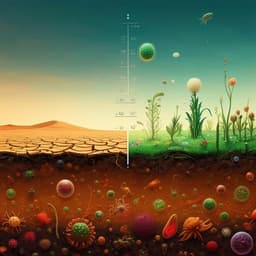
Earth Sciences
Global phosphorus shortage will be aggravated by soil erosion
C. Alewell, B. Ringeval, et al.
Discover how soil phosphorus loss poses a significant threat to future food production in this insightful study by Christine Alewell, Bruno Ringeval, Cristiano Ballabio, David A. Robinson, Panos Panagos, and Pasquale Borrelli. The research reveals alarming depletion rates across continents and a potential future scenario where erosion exacerbates phosphorus loss. Don’t miss this critical examination of agricultural sustainability!
Playback language: English
Related Publications
Explore these studies to deepen your understanding of the subject.







